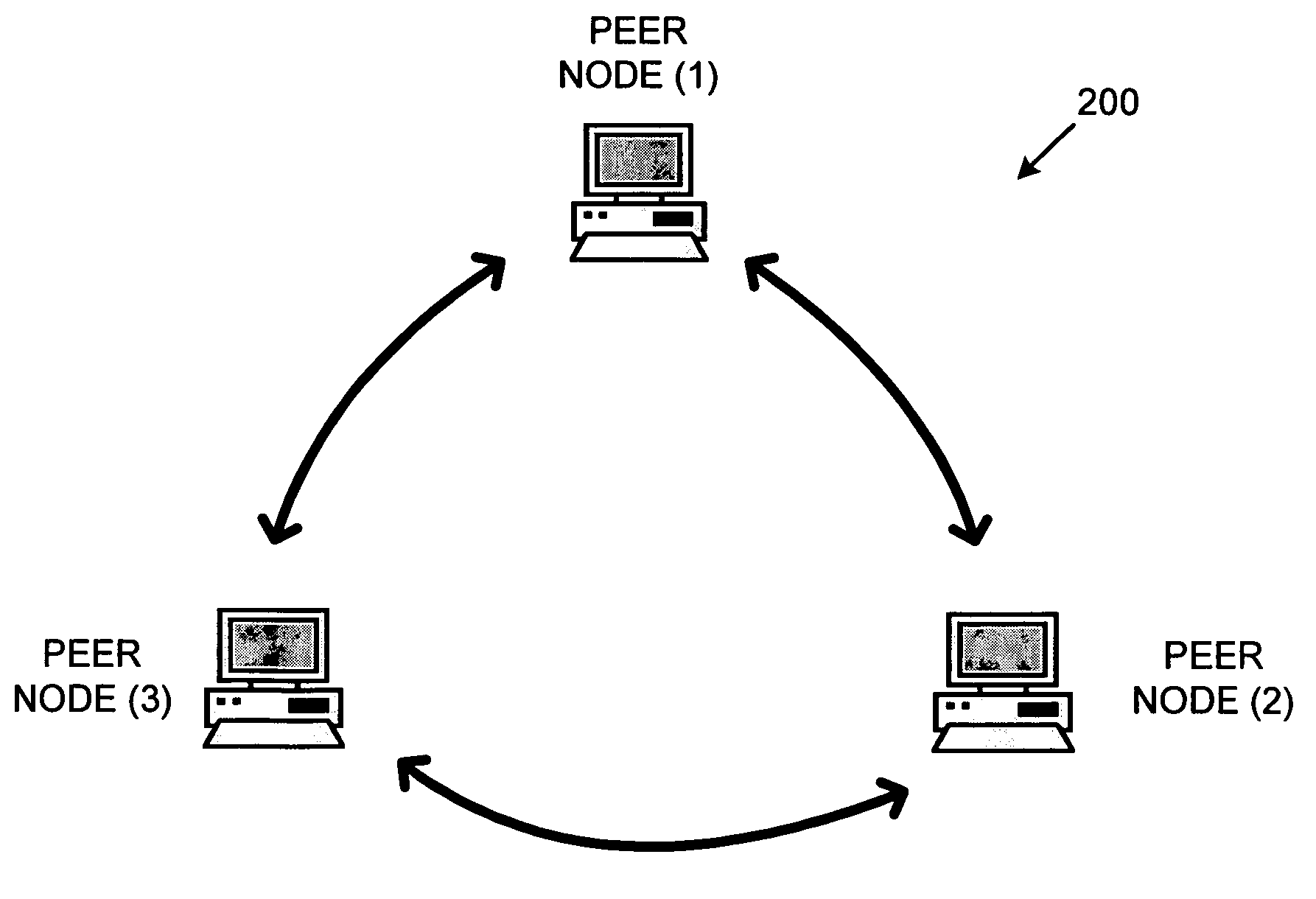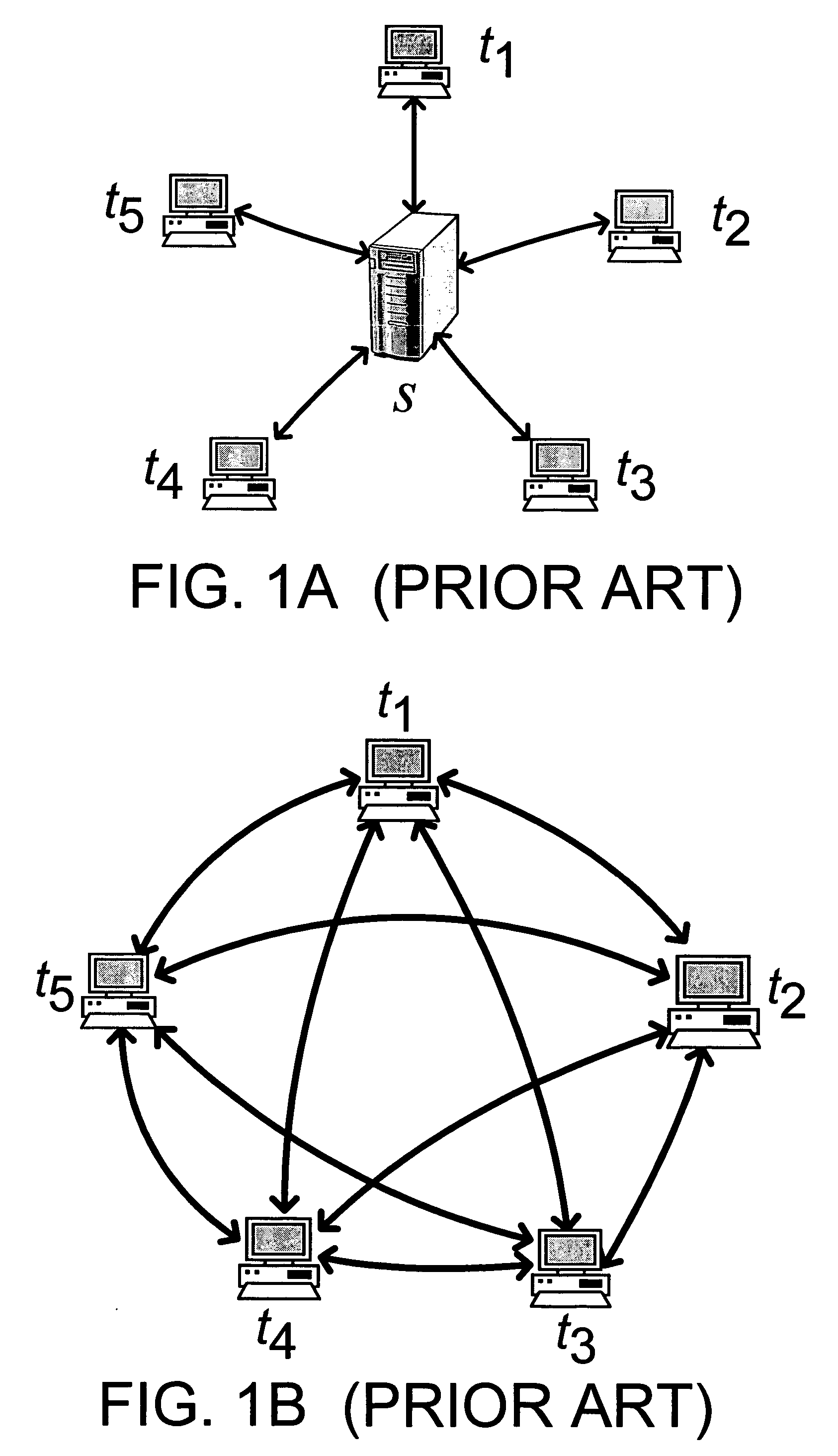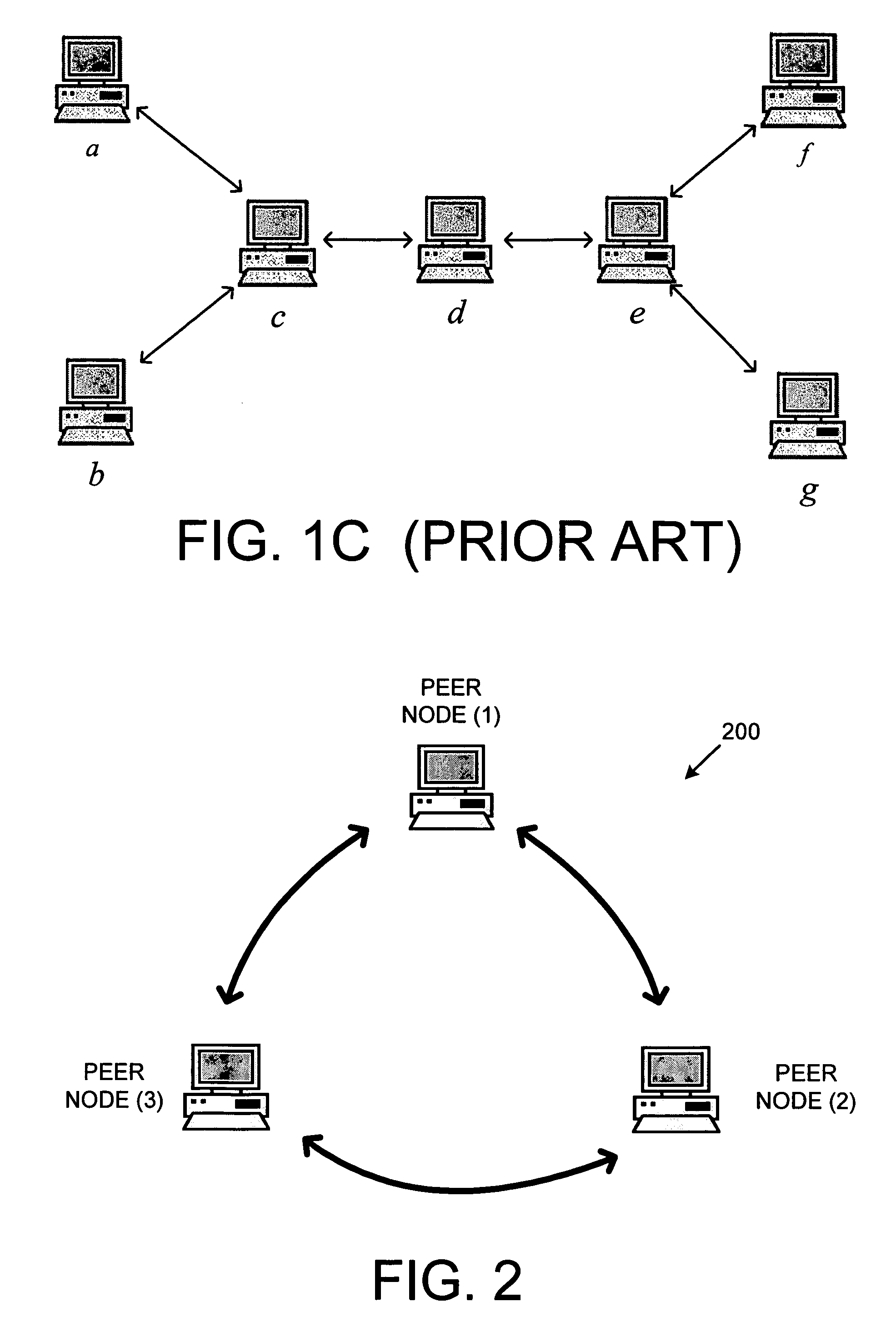Serverless peer-to-peer multi-party real-time audio communication system and method
- Summary
- Abstract
- Description
- Claims
- Application Information
AI Technical Summary
Benefits of technology
Problems solved by technology
Method used
Image
Examples
working example
IV. Operational Details and Working Example
[0041] The details of the operation of the P2P audio communication system and method shown in FIGS. 3 and 4 now will be discussed. In order to more fully understand the P2P audio communication system and method disclosed herein, the operational details of an exemplary working example are presented. It should be noted that this working example is only one way in which the P2P audio communication system and method may be implemented.
Audio Content
Mixing of Waveform Coded Audio
[0042] In this working example, the audio of the P2P audio communication system and method was encoded with a waveform codec. Such a waveform codec is Siren / G.722.1, described in G.722.1, “Coding at 24 and 32 kbit / s for hands-free operation in systems with low frame loss.” An alternative codec is MP3, described in Scot Hacker press, “MP3: The definitive Guide”. A further alternative codec is Windows Media Audio, in Microsoft Press, “Inside Windows Media”. FIG. 5 is a...
PUM
 Login to View More
Login to View More Abstract
Description
Claims
Application Information
 Login to View More
Login to View More - R&D
- Intellectual Property
- Life Sciences
- Materials
- Tech Scout
- Unparalleled Data Quality
- Higher Quality Content
- 60% Fewer Hallucinations
Browse by: Latest US Patents, China's latest patents, Technical Efficacy Thesaurus, Application Domain, Technology Topic, Popular Technical Reports.
© 2025 PatSnap. All rights reserved.Legal|Privacy policy|Modern Slavery Act Transparency Statement|Sitemap|About US| Contact US: help@patsnap.com



